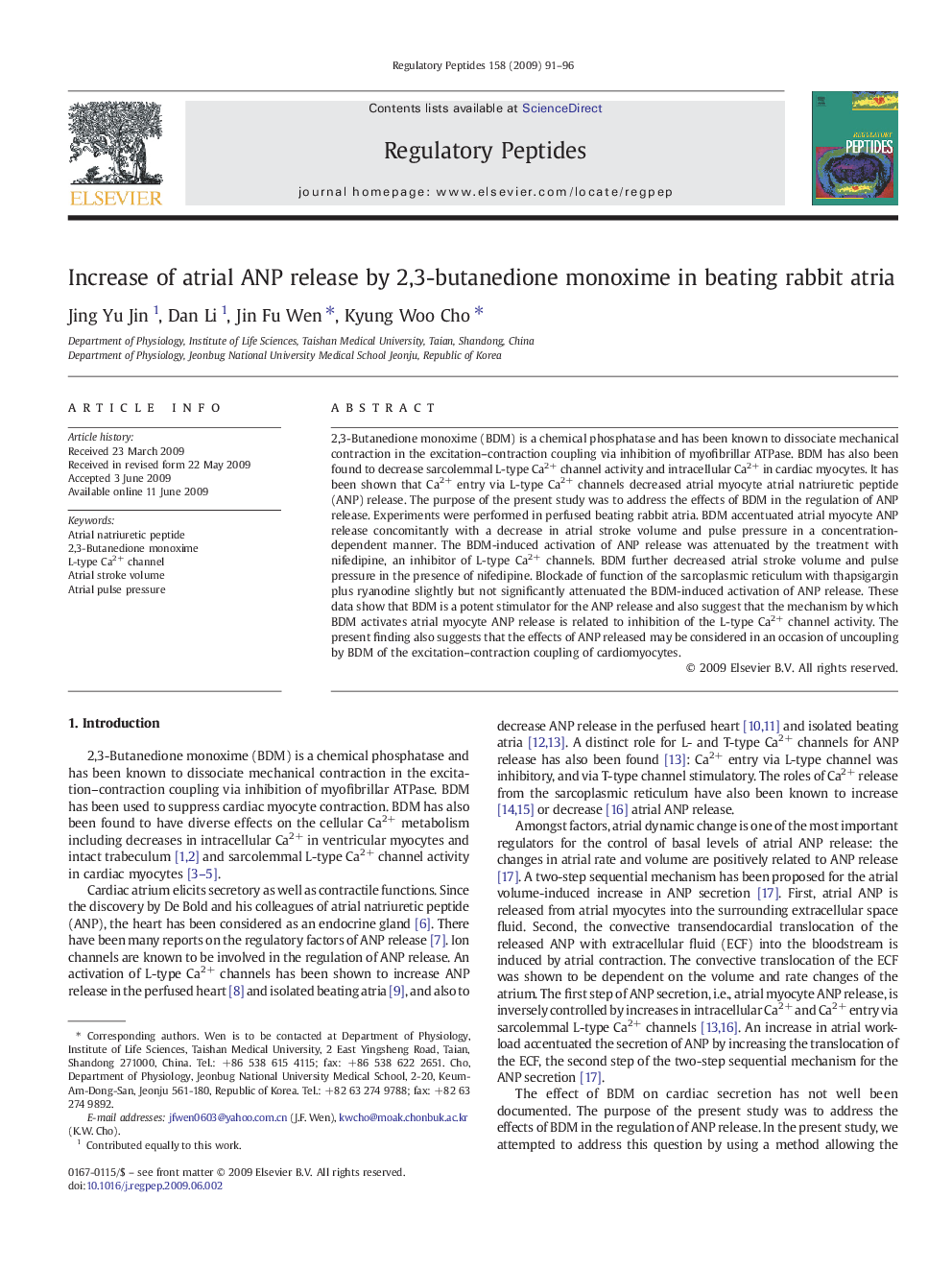| Article ID | Journal | Published Year | Pages | File Type |
|---|---|---|---|---|
| 2022950 | Regulatory Peptides | 2009 | 6 Pages |
Abstract
2,3-Butanedione monoxime (BDM) is a chemical phosphatase and has been known to dissociate mechanical contraction in the excitation-contraction coupling via inhibition of myofibrillar ATPase. BDM has also been found to decrease sarcolemmal L-type Ca2+ channel activity and intracellular Ca2+ in cardiac myocytes. It has been shown that Ca2+ entry via L-type Ca2+ channels decreased atrial myocyte atrial natriuretic peptide (ANP) release. The purpose of the present study was to address the effects of BDM in the regulation of ANP release. Experiments were performed in perfused beating rabbit atria. BDM accentuated atrial myocyte ANP release concomitantly with a decrease in atrial stroke volume and pulse pressure in a concentration-dependent manner. The BDM-induced activation of ANP release was attenuated by the treatment with nifedipine, an inhibitor of L-type Ca2+ channels. BDM further decreased atrial stroke volume and pulse pressure in the presence of nifedipine. Blockade of function of the sarcoplasmic reticulum with thapsigargin plus ryanodine slightly but not significantly attenuated the BDM-induced activation of ANP release. These data show that BDM is a potent stimulator for the ANP release and also suggest that the mechanism by which BDM activates atrial myocyte ANP release is related to inhibition of the L-type Ca2+ channel activity. The present finding also suggests that the effects of ANP released may be considered in an occasion of uncoupling by BDM of the excitation-contraction coupling of cardiomyocytes.
Related Topics
Life Sciences
Biochemistry, Genetics and Molecular Biology
Biochemistry
Authors
Jing Yu Jin, Dan Li, Jin Fu Wen, Kyung Woo Cho,
